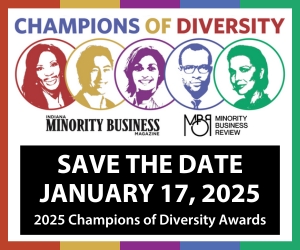By Amy Stark
What type of life do you think physicist Stephen W. Hawking would have experienced if he had lived in the 15th century? Do you think he would have been able to share his genius with the world in the 1600s? Imagine for a moment what Hawking’s life would have been like if he had lived in the early 1800s rather than now. It’s likely that past the age of 25, Hawking wouldn’t have been able to communicate with anyone. Throughout most of recorded history, Hawking’s life would have been the stuff of nightmares with an almost certain early death. For more than 40 years, innovative technologies have provided the now-70-year-old physicist with the ability to communicate.
Much like Hawking benefits from his computer-generated voice, we all can benefit from the most important communication innovation since Gutenberg’s press in the 1400s. With our mobile and electronic devices — like cellphones — plus a connection to the internet, we now can access the expressions of physically, mentally, socio-economically and geographically challenged individuals from around the world. It provides a space allowing collaborative efforts to solve problems — some that have plagued mankind since the beginning of recorded history.
All communication devices used predecessors as springboards for innovation. The printing press provided an easy way to collaborate in the creation of the telegraph. It stands to reason lots of information shared via telegraph played a role in the adoption of the telephone. The twisted pair of copper wires AT&T laid across the U.S. put a phone in virtually every home. All those landlines came in handy allowing you to connect to the World Wide Web via modems. Now there are satellites connecting the deepest parts of the Congo to the global conversation taking place all day, every day with more than five billion cellphone subscriptions.
Who was the first among our species to draw a picture in the sand or on a cave wall to communicate a message to someone? Who first decided to use the innovative technology of a pen to write on paper to share ideas among elites and clergy? We can thank Gutenberg for the ability to share ideas among a more diverse group of people. Books and newspapers were tremendous innovative technologies giving a more representative collective voice.
What new technologies will springboard from using mobile devices and a connection? The internet can provide the space to transport anything not made of matter, including ideas, music, literature, beliefs, history, religion, knowledge, wisdom, etc. All of those things listed can be translated into bits of data with the potential to reach a million minds at the speed of light. At the beginning of the 21st century, Professor Peter David Blanck presented a statement to the U.S. House of Representatives saying that “increased accessibility to private internet websites and services may have yet-undiscovered benefits to society.” Innovative technology gave Hawking a voice, but he’s just one person. Imagine how many ideas have been lost over time because there was no outlet for their expression. We must tap into the wisdom of the internet and trust that the most diverse group in our history will create better solutions to move us forward.
But the internet can be used for good and evil. It is a neutral playing field where there’s a constant battle of ideas going on all the time. Can we allow this innovative technology to be overrun with those who choose hate over compassion and war over peace?
We are at the convergence of global internet coverage and more cellphones on the face of the earth than toilets. This ever-increasing access to the voice of people from cultures around the world allows for a better sampling of our collective genius. Right? Haven’t we always relied on diversity and adaptability to ensure our continued evolution? Now we have an opportunity to collaborate globally — resolving issues that have plagued us for millennia. That’s why I encourage all the smart folks I know to get out there and fill the internet with their wisdom. In the face of all the bad news lately, it’s best to embrace this innovative technology, trusting it will help us move forward to a brighter future.
Amy Stark is founder and CEO of Digital Dames Inc., professor of digital media marketing at the University of Indianapolis, author of “The Tweeter’s Almanac, The Great Indiana Initiative of Aught Nine” and co-founder of the Social Media Dames Movement. Professor Stark is passionate about helping women learn how to leverage the power of digital communications to benefit themselves, their families, their careers and the world.











